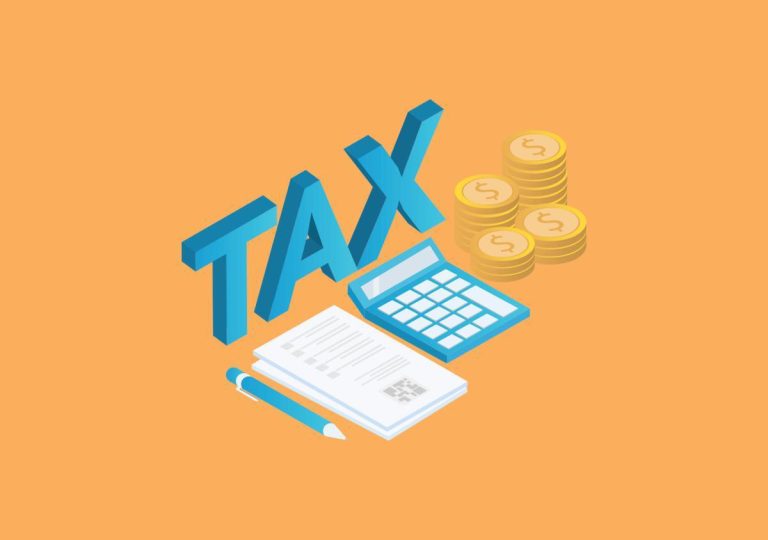Hong Kong has long been renowned for its simple tax regime and low tax rates. The transfer pricing (TP) rules introduced in the Inland Revenue (Amendment) (No. 6) Ordinance 2018 are beginning to challenge some of these simplicities – particularly the city’s territorial source principle where tax is only levied on profits which arise in or derive from Hong Kong. This was one of the key messages from the Hong Kong Institute of CPA’s Annual Taxation Conference 2019, held at the InterContinental Hong Kong on a rainy July morning.

A discussion with: (from left to right) KK So, Partner – Tax Services, PwC; Brian Chiu, Deputy Commissioner (Technical), Inland Revenue Department; Martin Richter, Partner, International Tax Services – Transfer Pricing, EY; Patrick Cheung, Partner, Global Transfer Pricing Services, KPMG; Leonard Khaw, Co-leader of Asia Pacific International Core of Excellence, Deloitte; Cecilia Lee, Leader, Transfer Pricing Services, PwC; and Michael Olesnicky, Senior Consultant, Tax, Baker & McKenzie
.
If profits are attributed to Hong Kong for transfer pricing calculations, does that mean they would be considered Hong Kong-sourced?
KK So, Chair of the Institute’s Taxation Faculty Executive Committee, and Partner – Tax Services, PwC, began the roundtable discussion with a question about Hong Kong’s territorial concept of taxation. He noted that “under the new TP rules, the functions performed, assets employed and risks assumed are used to ascertain how much profit should be attributed to Hong Kong.”
Michael Olesnicky, Senior Consultant, Tax, Baker & McKenzie, viewed the new rules as allocating profits, not imposing tax. “Source and TP are logically distinct. If you are involved in a cross border transaction then you have to allocate profits under TP principles. But only those allocated profits that have a Hong Kong source will be taxed in Hong Kong.”
“It’s been a big fear that allocating profits to Hong Kong would automatically make them taxable in Hong Kong. But, at the end of the day, the source principle under section 14 of the Inland Revenue Ordinance still prevail,” he continued.
“The problems happen when profits tax is imposed on an all-or-nothing basis on trading profits,” said Martin Richter, Partner, International Tax Services – Transfer Pricing, EY. “If profits tax could be imposed on an apportionment basis, you can correlate the profits tax liability to the value creation in the value chain. Without imposing profits tax on offshore trading profits, there is no way to reflect in the profits tax liability the value created in Hong Kong for offshore profits.”
“I agree that this creates a dilemma for trading profits,” said Cecilia Lee, member of the Institute’s Taxation Faculty China Tax Sub-committee, and Leader, Transfer Pricing Services at PwC. “The line for service income is, however, fuzzy. The notion of applying source principles to tax service income is to look at what services have been provided onshore. This is also the do for TP, and could be a way to consider,” she continued.
“To ensure that the profit allocation among jurisdictions in a cross border transaction is fair, how you articulate and document the transaction is critical.”
“To ensure that the profit allocation among jurisdictions in a cross-border transaction is fair, how you articulate and document the transaction is critical. Especially when dealing with tax authorities which do not have a tax treaty with Hong Kong, you can be quite exposed,” explained Patrick Cheung, Partner, Global Transfer Pricing Services, KPMG.
For Leonard Khaw, Co-leader of Asia Pacific International Core of Excellence at Deloitte, this was a hot topic at his firm and with his clients. “In my view, allocation of profits is good, but there must be something to allocate profits to. Instead of starting with profits, you should be seeing what the activities are in Hong Kong where profits are being allocated to. Then apply the source rule to the facts.”
Brian Chiu, Deputy Commissioner (Technical), Inland Revenue Department (IRD), set about assuaging fears that the TP rules would supersede Hong Kong’s source rules. “If it’s not a transaction between connected or associated persons, we don’t need to worry too much about TP rules. Hong Kong will follow the international standards promulgated by the Organization for Economic Cooperation and Development (OECD), which will apply first. But the source principle will continue to have great importance to Hong Kong,” he told the panel.”

Michael Olesnicky, Senior Consultant, Tax, Baker & McKenzie
How will the IRD’s ability to investigate not only pricing arrangements, but also group transactions, affect companies?
“The new TP law suggests that the IRD can challenge not only pricing arrangements that are non-arm’s length, but also transactions that would not have been entered into by parties dealing with each other at arm’s length. What is the significance of this?” So asked to kick off the second discussion.
Khaw explained that there were two groups of transactions between related parties. The first group are transactions you don’t see except between related parties, such as cash pooling. This is well-known and easier to find the right price for. “The second group is parties structuring transactions in certain ways, perhaps for the purpose of avoiding tax or for other reasons. This is a little bit more problematic, and tax authorities have the power to re-delineate transactions so that they are more like transactions between arms’ length parties, and then tax them accordingly,” he explained.
Lee provided a hypothetical example of the second group. A Hong Kong company undertaking supply chain functions transacts with a Dutch BV company, which undertakes significant treasury functions and some procurement process but doesn’t have a lot of employees. The Dutch company further transacts with a United States-based entity. “From a negative side, someone would say ‘is that treaty shopping?’ because there is no double taxation agreement between Hong Kong and the U.S., while there is between the U.S. and the Netherlands.”
“We would say the Dutch company has some, but not a lot of, economic substance. It undertakes treasury functions, has capital risk and invests in procurement platforms. It is common to see something like this in group companies,” she concluded.
Limited risk distributors face similar challenges, according to Olesnicky who proposed the example of a Hong Kong distributor acting for a U.S. supplier, which doesn’t take exchange rate risks or pay until goods are sold. “There is very little risk or function in Hong Kong, but it would still be compensated on a cost-plus basis. Would this be done between unrelated parties? Probably not. Maybe you should say the Hong Kong entity should be doing more, but then you have the problem of agreeing with the other company to give up some of their profits to Hong Kong,” he said.
To Cheung, the rules weren’t fundamentally unfair. “Most countries have a recharge rule, it’s necessary for tax authorities, and most are used judicially. Only when tax avoidance is determined to have taken place. Re-characterizing a joint venture structure is possible, but calculating the true arms’ length price in complicated cases can be difficult,” he concluded.

Patrick Cheung, Partner, Global Transfer Pricing Services, KPMG
Tax authorities around the world are proposing, or implementing, unilateral taxation arrangements targeting digital businesses. What impact will these have on the global TP consensus?
The imminent arrival of Base Erosion and Profit Shifting (BEPS) 2.0 will create many changes, according to So. “But even before then, countries like India are imposing TP attribution rules and France’s digital turnover taxes, which has caused anger in other jurisdictions – particularly the U.S.,” he noted.
“Unilateralism is already a reality,” said Khaw, pointing to anti-avoidance rules from the United Kingdom and Australia. He highlighted that countries were liable to see more “temporary gaps” like France has by imposing a 3 percent digital turnover tax. “These are planned on being removed when there is international agreement. However, tax authorities rarely remove rules,” he continued.
“At the end of the day, the OECD is responding to others. The European Union are particularly concerned about tax avoidance in the new economic environment and the OECD’s role is to forge consensus or common understanding of how profits are to be taxed by countries, to determine jurisdiction’s taxing rights,” said Olesnicky. “This is important because unless you have that consensus, you are going to get mismatches between how countries allocate profits, and end up with double taxation issues.”
Cheung thought that the solution could be found in the existing framework. “I’m less optimistic about Asian consensus. BEPS 1.0 is easy because all the tax authorities have the same interest and documentation but BEPS 2.0 is different. You have countries where the money is being made, the U.S. and China (with Amazon and Tencent) in conflict with the markets like India with a lot of eyeballs and users. These are fundamentally opposing interests.”
Building a consensus will take a long time in, and this unilateralism will lead to more pressure to enter into mutual agreement procedure (MAP) and advance pricing agreement (APA) arrangements according to Lee. “These unilateral actions will be imbedded into the strategy of negotiations if not officially included within the scope.”
“I see this as almost like a border tax or mining rights tax,” said Richter. The countries with users are trying to extract taxing rights from their scale and domestic resources, rather than economic activity.
Chiu pointed out that while these unilateral actions may give rise to tax disputes between jurisdictions, agreed double taxation agreements (DTAs) should always prevail over domestic laws. “But, in the future if these rules become prevalent and we have to take that, then I can see the chance of double taxation becoming very significant and resolving disputes might not be easy,” he said.

Cecilia Lee, Leader, Transfer Pricing Services, PwC
What are the major considerations when applying for APAs or MAPs?
Bilateral or multilateral APAs are agreements between two or more tax authorities, and the associated taxpayers, entered into by reference to DTAs, and govern the tax treatment of future transactions between the taxpayers. MAPs are a way of tax authorities consulting to resolve disputes regarding the application of DTAs.
So began by highlighting some statistics. “In 2017/18 India had 168 APA applications and concluded 53. China only concluded 9. Concerning MAP requests, Japan had 206, South Korea 45. Do these significant gaps tell us anything?” he asked the panel.
Lee spoke of her experience with APAs and MAPs, noting that they could be a common response to transfer pricing audits of previous years. “I expect the numbers to pick up across all jurisdictions as countries increasingly focus on their share of the pie,” she said.
“The low number of APAs doesn’t mean that a company shouldn’t apply for one. The question is why are you asking for one?”
Rather than just focusing on the numbers concluded, Khaw recommended looking at the number of cases in the pipeline. “The low number of APAs doesn’t mean that a company shouldn’t apply for one. The question is why are you asking for one? Sometimes an APA application is not about concluding an APA, but it is an effective means at deferring TP disputes as long as you have a case in the pipeline.”
So then asked the panel when they would advise taxpayers to go down the path of an APA or MAP.
“Typically, APAs are for companies with complex issues which are difficult to resolve, or have very big numbers. Resolving them takes time, with significant back and forth between the company and the tax authorities,” said Cheung. Lee agreed. “APAs are not simple. You can’t turn in a sheet of paper, get a letter back and that’s done. It takes time and consideration as to whether you’re ready to begin the journey. You will need to open your books and submit a lot more financial information – you need to treat the process with caution,” she said.

KK So, Partner – Tax Services, PwC
Richter considered that the interests of obtaining APAs in the local market is huge. “There are two profiles among the applicants, one favourable to the IRD, one not so favourable. The not-so-favourable profile is that Country-by-Country Reporting (CbCR) are causing headquarters to look around the world to locations perceived to be overcompensating, and trying to reduce the profitability in these jurisdictions. Hong Kong is one where companies are looking to manage their affairs in advance, rather than as a consequence of an audit.”
“The second profile is groups with companies in jurisdictions which are tightening economic substance rules. Activities level and income in group companies in these jurisdictions are subject to challenge. And this means that companies would consider re-domiciling income. There are queries as to whether Hong Kong is one of those locations it can be re-domiciled to given its reputation as a low tax jurisdiction,” he continued.
So asked about the IRD’s experience with APAs. Chiu said there was renewed interest in APAs within Hong Kong. “The IRD is going to do unilateral APAs, but we are also updating the Departmental Interpretation and Practice Notes on APAs and we will pull in extra resources. We will do our best to ensure we can cope with the needs of industry, the profession, and the new TP rules. We’ll work together,” he said.

.Martin Richter, Partner, International Tax Services – Transfer Pricing, EY
The three-tier TP reporting requirement is seeing tax authorities collect a lot of financial information from multinationals. How are tax authorities using this information in TP audit case selection?
To Khaw, China is the best example. With the expansion of its Jiangsu pilot initiative to monitor and control multinationals’ profits to the whole country, China is demonstrating how TP documentation can be used in risk factor analysis. “The tax authorities use it to give scores, based on which they select their TP audits. The OECD has said all authorities should do this,” he noted.
European jurisdictions increasingly making exchange of information requests to Hong Kong was noticed by Richter. “The genesis is CbCR, and whether to apply an audit to a particular country. They’re using exchange of information requests to ask for local files and other TP documentation from Hong Kong.
“Another thing I’m seeing domestically is IRD enquiry letters making direct connections between gross margin fluctuations or management fees or royalties and TP. They’re asking for information about changes, which includes TP documentation,” he said.
Olesnicky noted that tax authorities were using statistical algorithms to allocate points to determine TP audit targets. Lee agreed, noting that there was a lot of data analytics in use across the region and particularly China, which had begun before the TP rules were implemented. “I have cases in Jiangsu where, after the settlement of an audit, the official said, ‘we are here to serve you, taxpayer.’ They prepared reports on the company across a range of indicators. Taxpayers are being given these ‘body checks’ to compare them to industry norms,” she said.
But it’s not just about exchanges of information. Cheung had clients with concerns about whether the formal processes are being followed. “There are formal exchange mechanisms with strict protocols, but we’ve seen occasions where between country A and B, negotiations have started, but something from country C has turned up with was recently filed. This cannot be through the protocol,” he said.
The IRD has controls in the system regarding the use of TP documentation. “The OECD put certain conditions on the use of country reports for high level risk assessments. For a single group you compute all the ratios across jurisdictions to determine if there are outliers. For tax administrators you can compare group against group in a high level risk assessment. Then you study the master file, and if you don’t have it go for exchange of information. Next step is the detailed analysis and examination of TP policies,” said Chiu.

.Brian Chiu, Deputy Commissioner (Technical), Inland Revenue Department
What does this mean for Hong Kong?
The discussions showed that while Hong Kong is in line with the BEPS 1.0 international standards, the journey does not end here and Hong Kong should follow closely on the BEPS 2.0 developments and be proactive in amending its tax legislation to stay in line with global consensus. Unilateral tax actions by jurisdictions may continue until consensus is reached, companies and their advisors need to prepare for further turnover taxes, and complex negotiations between companies and tax authorities.
For companies, preparing highly-detailed TP documentation is a key manner of avoiding penalties. “For pure TP adjustment the penalty will be at most 100 percent,” said Chiu. However, he noted that complexity could arise if a company has omitted intergroup transactions. “We have to investigate cases carefully before we decide on the penalty, which could be the 300 percent general penalty, because of the omission,” he said.

Leonard Khaw, Co-leader of Asia Pacific International Core of Excellence, Deloitte
















